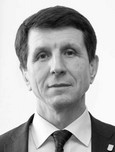Competitive game technology at the stage of sports specialization of freestyle wrestlers in the Sakha Republic
Ключевые слова:
competitive gaming technology, stage of sports specialization, freestyle wrestlers, Sakha RepublicАннотация
Objective of the study was to theoretically substantiate and develop the content of competitive gaming technology at the stage of sports specialization of freestyle wrestlers of the Republic of Sakha and test its effectiveness in experimental work.
Methods and structure of the study. The study was conducted at the Amginskaya Children and Youth Sports School of Freestyle Wrestling in the Sakha Republic from 2022 to 2024. The experimental work involved 31 people aged 11–13 years, involved in freestyle wrestling at the stage of sports specialization. Using a random sample, the participants were divided into two groups: a control group of 15 people and an experimental group of 16 people. The control group was trained according to the traditional sports training program, and the experimental group was trained based on the design of competitive game technology into the sports process. The following classical research methods were used in the experimental work: analysis of scientific and methodological literature on the topic of the work, systematization, abstraction, modeling, questionnaires, conversations, pedagogical observations, experimental activities, testing general physical fitness and special physical fitness, mathematical statistics, etc.
Results and conclusions. Based on the results of the conducted experimental work, a competitive-game technology was developed and tested, including blocks of national sports and competitions of the peoples of the Sakha Republic, which were projected into the training process of the sports specialization stage. Model indicators of physical and special physical fitness for freestyle wrestlers at the sports specialization stage were also developed. The experimental competitive-game technology introduced into the sports process contributed to an increase in physical fitness in the experimental group by 20,02% (P < 0,05), in the control group – only by 5,1% (P > 0,05); in special physical fitness by 10,6% (P < 0,05), while in the control group – by 4,5% (P > 0,05). Thus, the overall average increase in sports fitness at this stage in the experimental group was 15,3% (P < 0,05), in the control group – only 4,8% (P > 0,05). Thus, the results of the conducted experimental work allow us to recommend the competitive-game technology based on national sports, games and competitions of the indigenous people of the Sakha Republic in the practice of sports training in free-style wrestling for the younger generation of the republic.
Библиографические ссылки
Efimov A.A., Yatsenko S.V., Ponomarev V.V. Natsionalnaya borba «khapsagay» kak bazovaya osnova v sportivnoy podgotovke yunykh bortsov volnogo stilya Respubliki Sakha. Teoriya i praktika fizicheskoy kultury. 2024. No. 4. 41 p.
Ponomarev V.V. Pedagogicheskiye tekhnologii fizkulturnogo obrazovaniya shkolnikov Kraynego Severa. Doct. diss. (Hab.). Tyumenskiy gosudarstvennyy universitet, 2002. 290 p.
Markelov A.V., Ponomarev V.V. Prikladnaya napravlennost narodnykh sostyazaniy v fizicheskom vospitanii studentov vuza. Teoriya i praktika fizicheskoy kultury. 2014. No. 12. pp. 72-73.
Markelov A.V., Ponomarev V.V. Narodnyye sostyazatelno-igrovyye traditsii v fizicheskom vospitanii studentov vuza: teoreticheskiye i prakticheskiye osnovy. Monograph. Krasnoyarsk: SibGTU publ., 2014. 152 p.

Дополнительные файлы
Опубликован
Как цитировать
Выпуск
Раздел
Лицензия
Copyright (c) 2025 Theory and Practice of Physical Culture

Это произведение доступно по лицензии Creative Commons «Attribution» («Атрибуция») 4.0 Всемирная.
